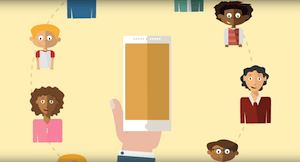
Two decades ago, families had a couple options for choosing a school if they were lucky: the local public school and any private institutions (faith-based or preparatory schools) within a manageable traveling distance. That was it.
Times are changing, and the student population is shifting. To get the whole story, watch this video or read on.
Previously considered the only alternative to public schools, private school enrollment actually dropped from 11.4% to about 10.2% between 1999 and 2015. Public school enrollment isn’t increasing, so where is the population shifting?
In short, charter schools. Enrollment in charter schools has jumped from around 1% in the late 90s to 7% in 2018, adding up to about 3 million students. Charter schools are publicly funded and open to all children (although some schools use a lottery system due to overwhelming interest). They’re subject to state legislation and standardized tests but are not subject to the same regulations as public schools.
The "publicly funded" part of the charter school approach is where the debate gains steam. Every student who chooses a charter school over the traditional public district they would otherwise attend means less money for that district. Less money means budget deficits and funding crises, which can lead to a backlash against school choice in general.
Choice isn't going away any time soon. Instead of fighting the change, some administrators are focusing their efforts on being the best available option for families. How? By delivering a positive experience to their communities, applying some fairly simple marketing principles, and leaning on a touch of creative thinking.
Here’s what to ask while building your brand.
You’re already committed to providing a quality education for every student. That's a pretty universal theme in education. The key to good branding, however, lies in defining what makes your school or district special, then sharing your story far and wide.Most great marketing starts with “why.” This is synonymous with defining and owning your story and sharing it before someone else tells your story for you.
- Why is your school or district special?
- Why should anyone choose your school or district over all the other great options nearby?
- If families are moving, why should they consider homes near your schools over other neighborhoods?
When choosing which characteristic (or two) to feature above all, shifting perspective creates new insight. Your brand is more than the stories your team tells. It’s what your audience—students, parents, current staff, prospective teachers, neighbors—think and feel about you, too.
- What does your community think?
- If you were to ask neighbors and families in the district, what would they say makes your learning environment special? Would you have the same answer?
While thinking about your audience, let’s also ponder who people are asking for advice. In many cases, parents are looking for testimony from other experienced parents familiar with the culture in the district. Parent comments also offer teachers a glimpse into what their experience might be like in the district—and a hint at whether the leadership team creates a healthy work environment.
- Who are prospective parents likely to trust?
- Who are prospective applicants likely to trust?
- Do you have families willing to share their stories about your school or district?
- Are your teams spreading a consistently positive message?
- How are you sharing these stories?
Once you’ve identified and captured these stories, it’s time to determine the best place to share them. For most, this space is going to be digital, especially if you’re hoping to reach families looking to move into a new community. Like it or not, a first glance at social media or a website is probably going to make more of an impression than in-depth facts and figures. This is the instant-recognition power of well-executed branding, and a strong argument for why school marketing and communication professionals are crucial.
- Where do people in your communities congregate?
- What first impressions do your digital mediums offer?
- Do you have an internal marketing or PR pro to guide your branding efforts?
Finally, it’s just as important to determine how to keep the community’s attention and build loyalty. A surplus of choices means there are options to consider if a school is consistently achieving poor results—whether it’s low test scores, poor culture perception, or some other measure. Good old-fashioned customer service applies here.
- How will you keep your community loyal?
- If the last visitor to your main office was writing a testimonial (and by now, they might be), what would it say? Would it accurately portray your culture? Would it fit your brand?
When to get started
How does yesterday sound? With the school choice debate still flowing and no end in sight, district leaders nationwide are taking steps to brand their districts as destinations—the schools of choice.
Free resources for edubranding:
Follow up with some free resources to get started with edubranding, including insight from 36 school districts standing out for all sorts of reasons—culture, data, and storytelling, to name a few.- EdTech Playbook: The District Website
- 8 Social Media Accounts to Learn From
- 8 Great Data-Sharing Districts
WHAT'S NEXT FOR YOUR EDTECH? The right combo of tools & support retains staff and serves students better. We'd love to help. Visit skyward.com/get-started to learn more.

|
Erin Werra Blogger, Researcher, and Edvocate |
Erin Werra is a content writer and strategist at Skyward’s Advancing K12 blog. Her writing about K12 edtech, data, security, social-emotional learning, and leadership has appeared in THE Journal, District Administration, eSchool News, and more. She enjoys puzzling over details to make K12 edtech info accessible for all. Outside of edtech, she’s waxing poetic about motherhood, personality traits, and self-growth.




